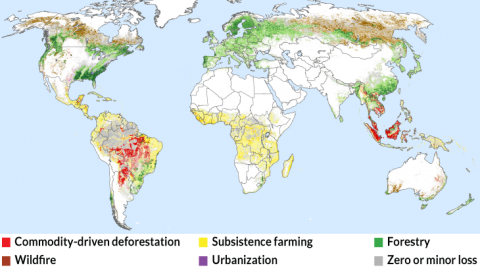
By Laurel Hamers
If a tree falls in the forest, will another replace it?
Of the roughly 3 million square kilometers of forest lost worldwide from 2001 to 2015, a new analysis suggests that 27 percent of that loss was permanent — the result of land being converted for industrial agriculture to meet global demand for products such as soy, timber, beef and palm oil. The other 73 percent of deforestation during that time was caused by activities where trees were intended to grow back, including sustainable forestry, subsistence farming and wildfires, researchers report in the Sept. 14 Science.
Understanding why forests are shrinking is important because the ecological impacts of permanent forest destruction are different from that of more temporary losses, says study coauthor Matthew Hansen, a remote sensing scientist at the University of Maryland in College Park.
The analysis dives deeper into data published in 2013 by Hansen and others, which revealed global forest losses without tracking what caused those declines. Here, scientists developed a computer program that analyzed satellite pictures to determine what was driving changes in forest size.

